Sustainability & Innovation: Arlan Peters, Nozozymes
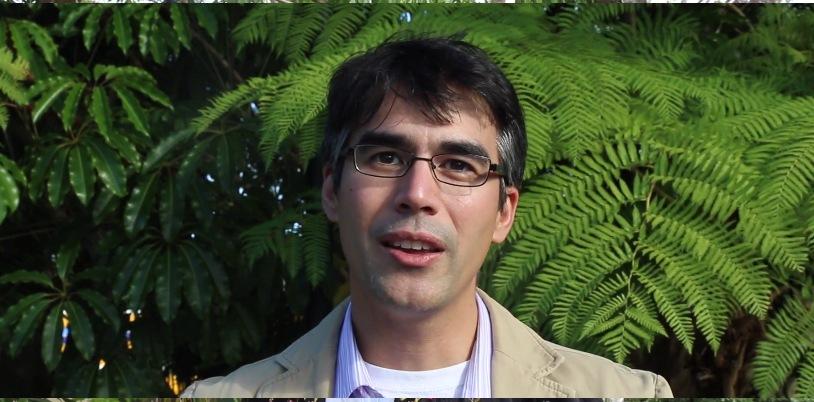

At this year’s Sustainable Brands conference in San Diego, we were challenged by Janssen Pharmaceuticals to ask leaders at the conference what the word "innovation" meant to them. Then, more specifically, we asked how innovation may or may not drive advancements in sustainability. We got a terrific range of responses, which we've got documented in a series of short video interviews. You can follow along here.
In this video, Arlan Peters, head of sustainability for Novozymes North America, talks about "bio-innovation" and how an understanding of biology helps the company innovate and create more sustainable, more successful products.
Why Kickstarter Should Come With a Warning
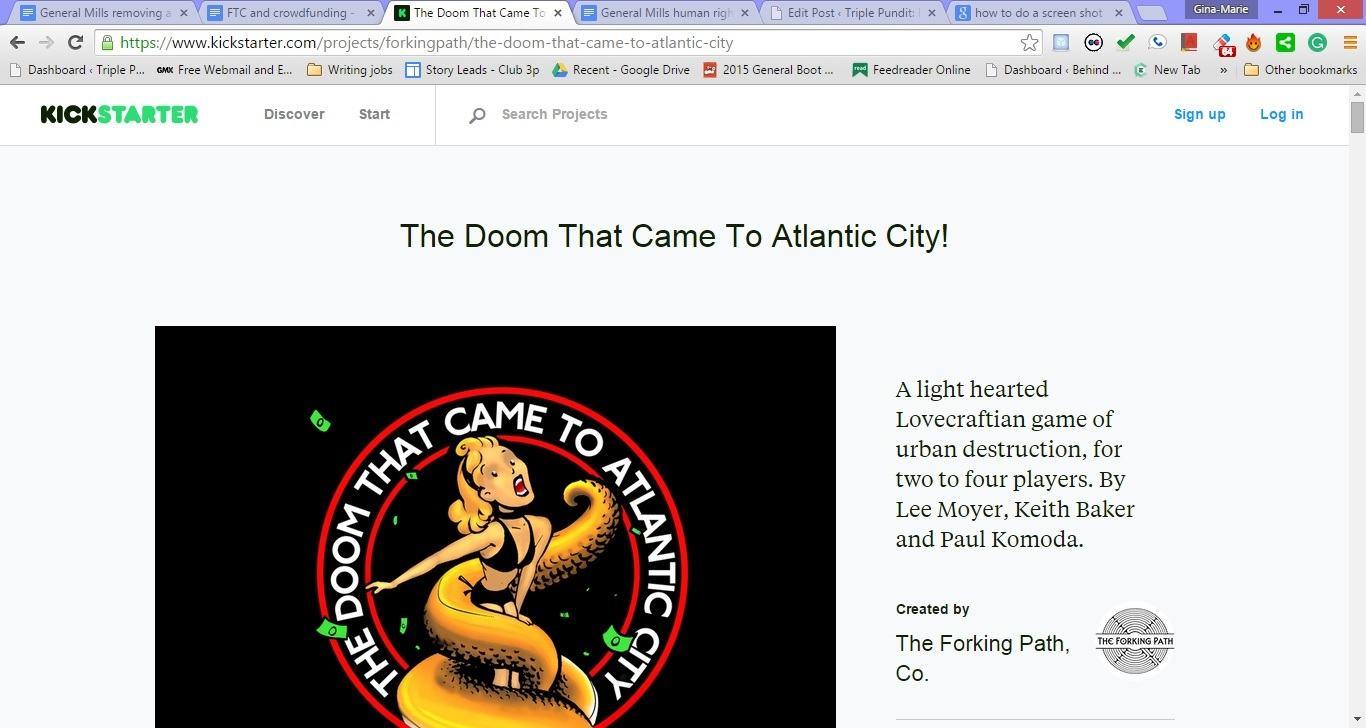

If everyone reading this article was in a room with me and I said, “Raise your hands if you have given money to a crowdfunding campaign,” most hands would probably be raised. My own hand would go up. Most of us like to help people, and crowdfunding sites like Kickstarter allow us to help someone in need or who is starting a new business venture. The sad truth is that sometimes scammers use crowdfunding sites. The U.S. Federal Trade Commission understands this and has done something about a scammer who claimed to be creating a board game.
The FTC took legal action against Erik Chevalier who solicited money in 2012 from consumers to produce the board game, The Doom That Came to Atlantic City. Chevalier promised in his Doom campaign on Kickstarter that if he raised $35,000, backers would get rewards such as a copy of the game. He raised over $122,000 from 1,246 backers. The majority of backers pledged $75 or more. In updates, he claimed he was making progress on the game. After 14 months, Chevalier announced he was cancelling the Doom project and refunding the backers’ money. However, he never provided the rewards or refunds.
Chevalier used the money raised from backers “for miscellaneous personal equipment, rent for a personal residence and licenses for a separate project,” according to the FTC’s complaint. Consumers filed complaints over his failure to provide the promised rewards or refunds.
Chevalier is prohibited from making representations about crowdfunding campaigns and from failing to honor promised refund policies, under the settlement order. The order also imposed a fine of more than $111,000, but suspended it because Chevalier is not able to pay. In other words, backers will still not be given refunds.
“Many consumers enjoy the opportunity to take part in the development of a product or service through crowdfunding, and they generally know there’s some uncertainty involved in helping start something new,” said Jessica Rich, director of the FTC’s Bureau of Consumer Protection, in a statement. “But consumers should be able to trust their money will actually be spent on the project they funded.”"Kickstarter creators have an incredible track record when it comes to following through on their promises," Kickstarter spokesperson David Gallagher told the Washington Post in a statement. "But creators who abuse our system and backers’ trust expose themselves to legal action."
The takeaway from the FTC’s settlement is that, when it comes to crowdfunding, consumers must keep in mind the Latin phrase "caveat emptor," meaning “buyer beware.” We must all be careful when we read about crowdfunding initiatives. There are more Erik Chevaliers out there.
Image credit: Kickstarter
Will China's Environmental Cleanup Catch Up With Its Economic Development?


By Anum Yoon
China’s green energy program is one of the largest, and most underreported, in the world. However, economic development is also a priority to the country’s government, and it’s often the case that growth comes at the expense of the environment. This leaves stakeholders asking: Can China’s environmental cleanup catch up with its economic development?
A green investment
Last year, China invested $90 billion in green energy programs. That was enough to put the country well ahead of the European Union and the United States.
Additionally, China has some of the world’s largest wind, solar and green-tech companies. At face value, it’s difficult to not see that the country has a commitment to an environmentally sound future.
The rest of the story
However, there are occasions when China is known to play not so nicely with Mother Nature. The country burns almost half the coal in the world. It’s also responsible for about 30 percent of the world’s annual greenhouse gas emissions.
It’s not just a scar on the planet that China’s leaving, either. Reportedly, emissions from coal plants in the country are responsible for 250,000 deaths each year.
This is not a problem lost on the Chinese government. The country’s leaders know that they can no longer afford to adopt a reactive plan for cleaning up the environmental mess that their growing economy is leaving behind. Instead, they need to adopt alternative energy sources.
“Environmental pollution is a blight on people’s quality of life and a trouble that weighs on their hearts,” said premier Li Keqiang this past March.
But what’s he going to do about it?
A top-down approach
China boasts the largest footprint of wind power of any place in the world. This is due in no small part to green energy companies like Goldwind, the world’s second-largest wind turbine manufacturer (first place goes to Vestas, in Denmark).
Just five years ago, China had no solar power. Now, the country is soon expected to surpass Germany in its solar-powered capacity. By 2020, China’s solar power capacity is expected to triple to 100 gigawatts. Many of the 10 largest solar manufacturers in the world today are Chinese companies.
Not all good news
Even though China has earned some bragging rights in its commitment to clean energy, the country’s efforts have encountered obstacles.
For example, although China has more wind capacity than the United States, its inefficient wind turbines generate less electricity. Why? Because the turbines were built for political reasons and not to maximize green energy usage.
As of this writing, some turbine developers are still experiencing maddening delays when it comes to connecting to the power grid. Further, even when they do get connected, the power that they generate often isn’t used.
Real estate development
Nowhere does China seem to show less of an interest in committing to a clean energy future than in its real estate development. Globally, buildings consume over a third of all electricity that is used worldwide. That number is closer to 50 percent if the energy used to construct the building (including electricity required to produce the raw materials used in construction) is factored in as well.
On top of that, buildings in China tend to be inefficient. This is in spite of the fact that an efficient building, such as modular buildings, can cost as much as four times less over its lifetime than a traditional building that requires coal-powered electricity for cooling, heat and light.
That’s a business decision that developers have made. They’d rather opt for the quick, cheap route and sell the property to pocket the proceeds. This effectively leaves the investor with a building that is a money pit and contributes to the overall environmental hazards that characterize Chinese real estate.
Now that the real estate market in China is slowing down, it’s likely that the government will place a stronger emphasis on the construction of green buildings. It’s thought that some companies have already started the ball rolling to this end, but because China lacks a transparent government and a free press, it’s hard to discern what is really happening.
That doesn’t change the fact that the green energy industry in China is happening: The country’s wind and solar companies are among the largest and, in some cases, most cost-effective in the world -- despite its real estate development woes.
China still has the potential to move forward toward an environmentally sound policy. It might just take some time before it’s fully realized. The top-down approach lacks government accountability, but that doesn’t mean that the country isn’t taking strides forward.
Whether or not those strides will outpace China’s economic development remains to be seen.
Editor's note: An earlier version of this post noted that buildings in China consume over 30 percent of all energy used worldwide. This statistic refers to all buildings worldwide, and the post has been updated to reflect this distinction.
Image credits: Solar is Everywhere, Air Pollution in China & Apartments via photopin
Anum Yoon is a writer who is passionate about personal finance and sustainability. As a regular contributor to the Presidio Graduate School’s blog, she often looks for ways she can incorporate money management with environmental awareness. You can read her updates on Current on Currency.
Top Retailers Discontinue Confederate Flag Merchandise
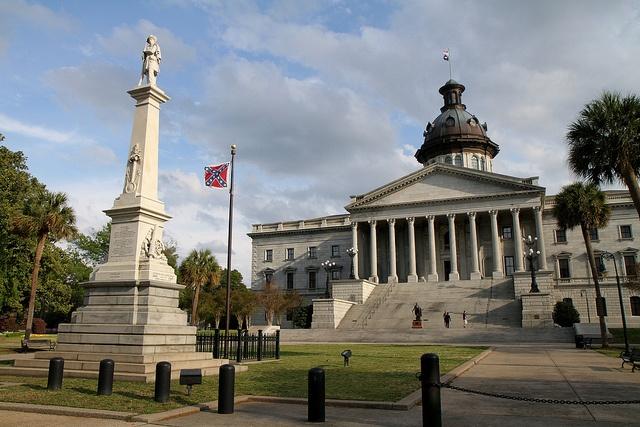

Spurred by the Charleston massacre that left nine African-American churchgoers dead at the hands of a 21-year-old white supremacist, Walmart and Sears have decided to discontinue all of their Confederate flag merchandise.
The removal of the merchandise, including items such as belt buckles and T-shirts, came after Republican South Carolina Gov. Nikki Haley publicly said that she wants the Confederate flag near the state’s capitol building taken down. Although Haley voiced her opinion on the removal of the flag, it could be months before it's actually removed from the grounds.
The state legislature has the final word on whether the initiative to rid the flag goes through. The legislature will likely take a lot of heat in the days wasted not taking the flag down, as rallies have already entrenched South Carolina’s capitol city of Columbia. As part of an installment reached 15 years ago, two-thirds of the state legislature must vote to remove the flag.
But Walmart and Sears didn’t waste any time dissolving the image of the Confederate flag in their stores. As of Monday afternoon, with just a few mouse clicks, a customer on Walmart.com could purchase merchandise embroidered with the flag. Sears Holdings Corp., which operates Sears and Kmart, doesn’t sell Confederate flag merchandise in its stores but said it would halt all third-party vendors selling those items.
CNN inquired whether Amazon and eBay would remove Confederate flag merchandise from their sites, and both businesses said they would also stop selling these items.
Dylann Roof, the young man accused of killing nine black worshippers in the Emanuel African Methodist Episcopal Church, was pictured on Facebook wearing a jacket emblazoned with the flags of two countries which supported white supremacy and segregation, apartheid-era South Africa and Rhodesia — modern day Zimbabwe. A huge tip for his arrest came because a woman recognized his three-flag “Confederate States of America” bumper sticker.
The Confederate flag represented the unrecognized, joint unionship of 11 states that were outraged at President Abraham Lincoln’s election into office in 1860. The flag, which was adopted by the Confederacy in 1861, stood for a racist, slave-bearing South set to go against the North in what would be the bloodiest battle in American history.
South Carolina was the leading Confederate state, responsible for engineering the Confederacy and becoming the first state to secede from the Union. Of the 700,000 people living in South Carolina at the time, more than half of those people were enslaved blacks. After the Confederacy lost the Civil War in 1865, South Carolina was readmitted into the Union three years later. Some say the Confederate flag remains a symbol for the state’s history and culture, but its impact and constant reminder of an unjust era has led to many eyebrow-raises over its necessity.
Roof confessed that he committed the attack with the intention of starting a race war, but instead it seems that Roof has started a war with the Confederate flag.
Image credit: Flickr/Jason Eppink
General Mills Releases First Public Policy Statement On Human Rights


General Mills announced its human rights policy earlier this month. Although the policy does not contain anything new, it is the first time the company has released a public policy statement on the topic. Or as Catherine Gunsbury, director of sustainability and transparency for General Mills, told TriplePundit: It is a “public-facing statement” of the company’s beliefs regarding human rights.
Why does a company need a human rights policy? Gunsbury explained that in “today’s world we are hyper-digitalized and extremely global.” There is an increase in access to information, including for business. That makes a company vulnerable to risks, Gunsbury pointed out, but it also gives it the “opportunity to be a positive partner."
In its public human rights policy, General Mills aims to do several things:
- Codify existing policies, programs and approaches
- Bring together much of what it is already doing
- Create a common narrative and thinking about human rights
There are six different sections to the human rights policy, and the beginning is a statement of human rights. This establishes that General Mills is a “company in a much broader society, and we wanted to set a very broad framework,” Gunsbury said. The policy discusses what the role of business is in human rights and, specifically, what General Mills sees as its purpose. As the policy states, the company works “within a large, diverse value chain of business partners and stakeholders.” What it expects is for them to “adhere to ethical business conduct consistent with our own."
What is the significance of General Mills' announcement given that there is nothing new in the human rights policy? According to Gunsbury, there are several reasons why it is significant -- first being that the company has never made a public statement on human rights. "There is a real opportunity for us as a company to say something,” she told us. “Business is seen as both part of the problem and part of the solution."
The public policy statement is a step toward greater transparency. It opens up the conversation about what General Mills believes and is doing regarding human rights. And it is also an opportunity to take different actions and engagements that are already underway and package them into one document that serves to express the company's beliefs and approach.
Over a year ago, General Mills made a commitment to sustainably source 100 percent of its top 10 ingredients by 2020, calling it the 10 by 2020 Commitment. One of those ingredients is vanilla, sourced from Madagascar. As of last year, the company sourced 45 percent of its vanilla sustainably. One of the focuses in making its vanilla supply chain more sustainable is helping smallholder farmers who tend to struggle to make a stable livelihood. “One of the things we look at in trying to strengthen that supply chain is strengthening their capacity for a sustainable livelihood, ensuring that they are able to command the highest price possible for their crops, which translates into economic value for them and improves their lives,” Gunsbury said.
Image credit: Flickr/urza
Want to Create Real Change? Start By Making Sustainability Cool
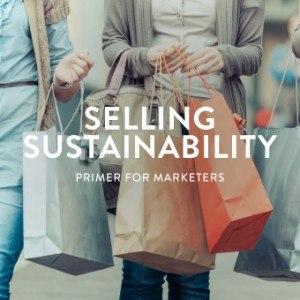

By Natasha Perkins
At Futerra we recently co-published a guide with BSR for Selling Sustainability, offering a framework for marketers struggling with the challenge of making sustainability desirable. That’s nice and all. But as Raz Godelnik recently asked in a post on TriplePundit, is this the answer? Let’s see.
People want better lives and a better world. We can positively say this, whether we believe attitude surveys or not. And sustainability practitioners often believe they have the answer: greener, cleaner, safer and all that jazz.
Here is the crux. This answer isn’t giving people what they want. For decades sustainability has been sold on better for planet, for people and for close-to-extinction tree frogs. The problem: The only ones to listen are the already converted (Futerrans included of course).
Because the masses want better lives for themselves and a better world that they can experience: value to them, not to the tree frogs. The good news is that this can align with sustainability. The benefits aren’t mutually exclusive. But it all hinges on telling a great story. Solar power can save you money and give you independence. Organic food is safer for your children. And a driving a Tesla makes you look pretty damn cool.
Our proposition is that marketers can help make sustainability so desirable that everyone wants a piece of it, not just the usual suspects perusing the aisles of organic health food stores.
Now Raz suggest the troubles don’t end here. His analysis: If marketers truly want to sell sustainability, they need to think about how they can design a new culture and change the environment in which we live. Let’s try adding in some nuance.
Products and messages play a big part of cultural context in which we live. Think about the smartphone and how it has transformed social interaction. Or how creative digital marketing has changed the way we view entertainment. Eighty-three million views of Nike’s Last Game video is testimony to this.
Now imagine more products and messages fronting sustainability that is actually desirable: more Teslas and more Ella’s Kitchen -- things that raise people’s expectations and gets them asking for more and better. That’s a pretty good start to create cultural change.
So, is it enough? Well. Re-designing culture is a massive societal project. It’s a multiplayer game that happens over time. Governments, citizens and companies need to create attractive representations of sustainability that lead to social roles and institutions to support said representations. So, this whole project probably needs some direction, some fuel and a vision of what this better world looks like.
Like victor Hugo said, "There is nothing like a dream to create the future."
What Selling Sustainability can do is offer a pragmatic tool for companies to help make sustainability so desirable it becomes a new normal. But without a bolder and braver dream of what better is, our electrical cars might all get lost in the mud.
So, we would love for you to let us know what you think a better world looks like, and the type of stuff you think belongs there. Let’s create both the dream and the tools that will make it reality. Tell us about your dream of a better future on Twitter at @Futerra.
Image credit: Futerra
Natasha Perkins is a brand strategist for Futerra.
Defining a New Approach to Energy


By Chat Reynders and Patrick McVeigh
The world has reached a critical point in its exploration of energy sources, and it stands on the cusp on redefining how we create, distribute and store power. What was once thought of “alternative energy” is now simply considered the “future of energy,” with titans like Tesla leading the way.
The market is in flux between ideas and the technology to advance those ideas. Those companies that serve as bridges to implementation are well positioned for success as the field shifts; they will serve as social and financial leaders for the energy revolution.
There are three areas that are poised for a second wind as the energy field takes shape:
1. Accelerating next-generation ethanol
The first foray into biofuels achieved nominal levels of success; efforts met with criticism due to a perceived waste of food crops and the reality that the process to create energy still resulted in increased greenhouse gas emissions. As the New York Times noted, the drive for corn-based ethanol adoption has “helped drive up global food prices, has worsened some types of air pollution and has done relatively little to reduce overall emissions of carbon dioxide.”
However, lessons taken from first-generation biofuel production are leading to a much more efficient technology that is disrupting the biofuel space. Second-generation processes use waste products from agriculture (i.e., corn husks and stalks) in a process that reduces greenhouse gas emissions by almost 90 percent over gasoline, according to the Department of Energy.
Production is still in its infancy. There are only a handful of facilities in operation globally, but there are telltale signs of more widespread adoption. As the price of production lowers to create a competitively priced product, demand will naturally follow. Indeed, Sandia National Labs says the U.S. could produce 75 billion gallons per year by 2030, meeting 50 percent of U.S. fuel demand.
Novozymes is a key player as it delivers the enzyme-based technology that brings the concept of second-generation ethanol to life. Enzymes serve as the catalyst for converting agricultural waste into energy, and Novozymes is the primary provider of the technology. The company services approximately 60 percent of the market for first-generation enzyme use, and has the potential to replicate that market share for the second generation.
2. Behind the scenes of solar
The initial promise of solar energy lured some investors away from fundamentals, as they fell in love with the idea of the end product more than the strength of the technology and the state of the market. Solar panel production itself, however, was a risky venture, as global competition – particularly from Chinese manufacturers – squeezed margins and drove down profitability.
Patient investors are also seeing greater opportunities with nuanced, central technology emerging as the real change-maker. Enphase Energy, for example, supplies inverters that convert power from solar panels to electricity in the home. Solar energy systems are now sophisticated enough to handle inverters for individual panels, enabling customers to fine tune and maximize the efficiency and effectiveness of installations.
Enphase’s market position was hard fought, with significant upside still to be gained. Residential solar installations in the United States increased by 58 percent in the third quarter of 2014, compared to the prior year, and Enphase controlled 37 percent of the domestic market for residential inverters in the first half of 2014.
3. Solving the storage challenge
The next great leap in energy storage is already well underway, and Tesla put a stake in the ground with its April 2015 announcement that it will provide energy storage (batteries) for home use that could allow users to migrate off the power grid.
Home energy storage is a significant stride in changing the way consumers approach solar energy, allowing them to generate electricity during the day and keep it overnight – instead of selling it back into the grid, as traditional systems demand.
Tesla’s system is too expensive to have an immediate impact. Its announcement, however, has helped bring the conversation about more efficient energy use from theory to reality. “Over time, lower cost, competition and network effects from a larger number of users may well increase the number of households switching to a solar-and-storage type of model Tesla is laying out,” notes CNBC.
Meanwhile, the overall storage market was already expected to expand quickly. By 2019, total U.S. sales could reach $1.5 billion – up from just $128 million in 2014, according to a March report by GTM Research.
Biofuels, solar and storage will each be important components to the evolution of energy over the next several years. Further gains in efficiency are expected as well, and smart investment strategies should focus on the technologies and processes that contribute to these advances by attacking issues at the roots. The companies that fuel the sector’s growth will be those that provide the foundation for a stable, sustainable and profitable shift.
Image credit: Flickr/Windwärts Energie GmbH / Photographer: Mark Mühlhaus/attenzione
Chat Reynders, Chairman and Chief Executive Officer of Reynders, McVeigh Capital Management LLC., has more than 25 years of experience in investment management and social venture investing. He has structured and funded public/private partnerships that have brought more than $150 million in revenues to leading cultural institutions. He has for decades produced socially oriented IMAX films, including the Oscar-nominated Dolphins and Coral Reef Adventure.
Patrick McVeigh, President and Chief Investment Officer of Reynders, McVeigh Capital Management LLC., has more than 30 years of experience in socially responsible investing (SRI). He was an owner and key employee of one of the first SRI wealth management firms, and he served on the board of the Social Investment Forum. At SIF, he pioneered research on SRI, and he has authored articles on finance, ethics and ecology, and contributed to The Social Investment Almanac (New York: Henry Holt, 1992) and Working Capital: The Power of Labor’s Pensions (Cornell University Press, 2001).
Sustainability & Innovation: Bridgett Luther, Cradle to Cradle
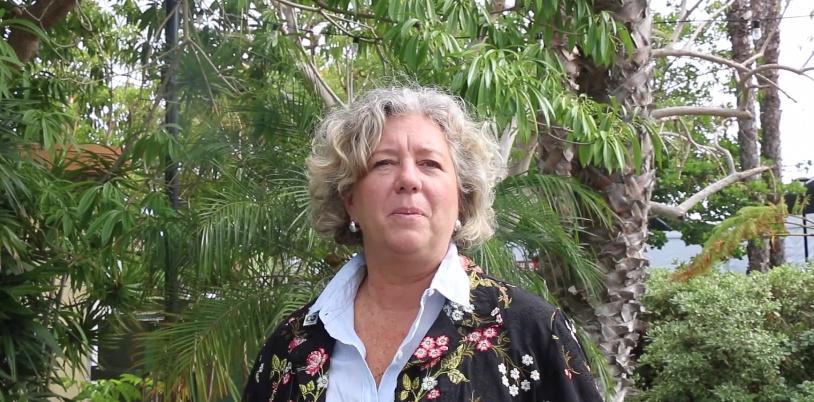

At this year’s Sustainable Brands conference in San Diego, we were challenged by Janssen Pharmaceuticals to ask leaders at the conference what the word "innovation" meant to them. Then, more specifically, we asked how innovation may or may not drive advancements in sustainability. We got a terrific range of responses, which we've got documented in a series of short video interviews. You can follow along here.
In this video, Bridgett Luther, president of the Cradle to Cradle Products Innovation Institute, talks about how her team is helping companies innovate toward more sustainable practices -- and a better bottom line.
Rowhouse Heat: Walking the Line Between Mandates and Good Sense


By Mark Alan Hughes
A few years back, I helped lead a research project on improving energy efficiency in buildings for the U.S. Department of Energy. My team had a motto that I translated into Latin: “planto is imitabilis, planto is vilis, tunc planto is mandatum," which basically means “make it hipper, make it cheaper, then make it mandatory.”
Eventually, government has to draw a line and call some things mandatory. But rules need to bend, and sometimes they need exceptions to achieve the greater good.
On March 12, DOE published a proposed rule that would seek to raise the mandatory energy-efficiency standard for a residential furnace that can be sold nationwide. (Thanks to vigilant folks at the Philadelphia Gas Works for bringing this to my attention.) The current standard is 80 Annual Fuel Utilization Efficiency (AFUE) and this allows a homeowner to install a non-condensing furnace. DOE is proposing to require a 92 AFUE, which is a much higher efficiency rating.
At that level of efficiency, the combustion exhaust now drifting up through Philadelphia’s thousands of rowhouses would no longer be hot enough to rise out of the chimney and would condense, or form drops of water, in the vent. The new rule would require condensing furnaces, which have additional venting requirements that add significant dollars to the cost of installation.
That’s a kick in the head for Philadelphia’s 400,000 rowhouses with their energy-efficient walls and small roof-to-area ratio. These very same factors constrain the use of condensing furnaces in rowhouses.
Non-condensing furnaces employ net-negative vent pressures and require masonry chimneys or metal vents that are installed vertically. These vertical chimneys exist in nearly all of Philadelphia’s rowhouses. Condensing furnaces employ positive net pressures, and use plastic, pressurized, gas-tight venting that is typically installed horizontally, requiring blowers to exhaust combustion products and condensate drains to operate properly.
Replacing a non-condensing furnace with a condensing furnace in a typical Philadelphia rowhouse will require a new venting system, including abandonment of the existing venting system, structural changes to accommodate a new venting system path, and relocation of the furnace to meet the code and installation requirements of the new condensing furnace system.
These additional costs are likely to delay the installation of higher efficiency non-condensing furnaces, extend the use of existing furnaces beyond their safe operating life, drive owners to switch to alternative heating systems that may well be less safe and/or less economical than non-condensing furnaces, or some combination of all of these outcomes.
In effect, the highly efficient rowhouse building type is being penalized with a mandate to use a technology that costs more in a rowhouse than a ranch house. DOE rules should acknowledge the advantages of the rowhouse building type while still requiring improvements when feasible.
One way to do this would be to treat condensing and non-condensing furnaces as two separate product classes, with different efficiency standards for each. A second way would be to provide a provision allowing non-condensing furnaces with optimal AFUE ratings in building types that meet threshold energy performance levels, such as rowhouses. The latter would recognize that a rowhouse with a less efficient non-condensing furnace still consumes less energy for heating than a free-standing home with a more efficient condensing furnace.
Total energy efficiency performance is the ultimate goal for these rules, and the public interest would be poorly served by creating a disadvantage for the rowhouse, one of the most efficient building types in the country.
DOE is accepting comments on the new rule until July 10. Comments may be submitted online here.
Image credit: Flickr/John Vosburgh's Elfreth's Alley
Mark Alan Hughes is Faculty Director of the Kleinman Center for Energy Policy at Penn and was the founding Director of Sustainability for Philadelphia.
5 Steps to Create Meaning and Purpose at Your Company


By Pamela Hawley
“Don’t ask yourself what the world needs. Ask yourself what makes you come alive and then go do that. Because what the world needs is people who have come alive.” - Howard Thurman
This is very true.
Often I hear people say, “Oh, I wish I did something meaningful like you do, helping the world.” Working in philanthropy is a wonderful way to serve. But social workers, teachers or philanthropists don't corner the market on meaning. If you want to create meaning and a core purpose at your company, here are the top five inspiring — and practical — steps.
1. Start with you
Your company cannot have a core purpose if you don't know your own. It's that simple. Follow what your deepest inner voice tells you -- not what society says.
Not the "I must be an investment banker; I should be a consultant." And definitely not "I will do something good for the world, and then go 'get a real job.'”
You are created for a purpose. Your company has to see that purpose in you. It's not just a product, but all your drive, passion and energy at the forefront, every day.
2. Define the values and activities around your purpose
What is it you most value?
Pick the one value and one service, and start there. Don't make it complicated. We are not talking about an Executive Summary. Whether you are starting out or have been in business for 10 years, this is a superb exercise. Start with your passion, or get back to your passion.
If this is difficult, take some time. Retreat centers, walks on the beach and sitting in a forest simplify your thinking. Take nothing but a pad and paper to write down what inspires you, both in a) how you take action and b) what type of service. Don't think, just let it pour forth naturally, whether it is an essay or a few inspired words.
A) How you take action/What is natural to you
- Enthusiasm
- Mobilizing people
- Closing deals
- Negotiating
- Bringing consensus
- Strategizing
- Exploring new frontiers
- Building sure and steady
- Creating a boutique firm
- Scaling
- Excellence in client service...
There is no limit.
B) Types of service -- here are a few examples that may fit your situation:
- Service and a beauty salon
- Technology and apps that make people efficient
- Health and organic foods
- Eco-friendly and better composting techniques
- Efficiency and a better search engine
- Purer dry cleaning services
- Marketing/promoting others
If you can't do this, your team can't work to their potential.
They can't see your focus or drive. They will be B players; and you are not a B player.
Take the time to solidify your A-player status. Sometimes we get off track, and now you can get back on.
3. Build (or rebuild) a practical, inspiring business
So, what does this look like? It depends on your interests and passions. Here are a few examples.
Create a haven. It may be that you have a passion and talent for interior design. Help make people’s homes special. We all need a haven: a place to welcome others, and ourselves. Build a company around that.
Inspire confidence with your numbers. Perhaps you love numbers. Provide order to your clients' finances. What would I do without my bank? Where would I put, record, manage the deposits of donations for UniversalGiving? We need a trustworthy expert. Let it be you.
Mobilize People Through Sports. You are an athlete at heart. If you are a player, play that game with integrity and enthusiasm, with the greatest sportsmanship. You will be a model for everyone watching, your colleagues, the audience, the referees and any children present.
If you are a coach, your guidance and words can impact hundreds of people -- and for their entire lifetime.
If you run a sports shop, you can sell the best equipment. Search diligently to find the products that will help people succeed.
4. Core purpose statement
Come up with your core purpose statement. Use an inspiring verb or adjective and clear action. Here are a few examples:
- "We sell the top soccer balls, with enthusiasm for the sport."
- "We create life-changing apps that save you time."
- "We are calm anchors with our cloud service, ensuring your data is safe and secure."
- "We create the most professional dry cleaning, making you feel like the President."
- "We protect your company as you face cyber-terrorism in your backyard and across the world."
Put it up on your wall with your values. Talk about it and reference it in meetings. It's more verbal, casual and easy than a mission and vision statement.
Live it.
Speak it.
Use it in conversations: with your team, with clients and to yourself when you wake up every day.
It should roll off your tongue, and soon everyone will speak about it naturally.
5. Go back to yourself
Your company has a core purpose because you do. Serve by following your passion. Don’t do what you think you should do — do what you are created to do. You will find all types of people needing your inspiration and services, in ways you’ve never imagined.
Image credit: Flickr/Eversheds International
Pamela Hawley is the founder and CEO of UniversalGiving, an award-winning nonprofit that connects volunteers and donors with quality service opportunities. She is a winner of the Jefferson Award (the Nobel Prize in Community Service) and has been invited to three Social Innovation events at the White House. She also writes Living and Giving, a blog with the mission of "Inspiring Leaders to Live with Excellence and Love."
Connect with Pamela: Twitter Connect with UniversalGiving: Twitter, Facebook